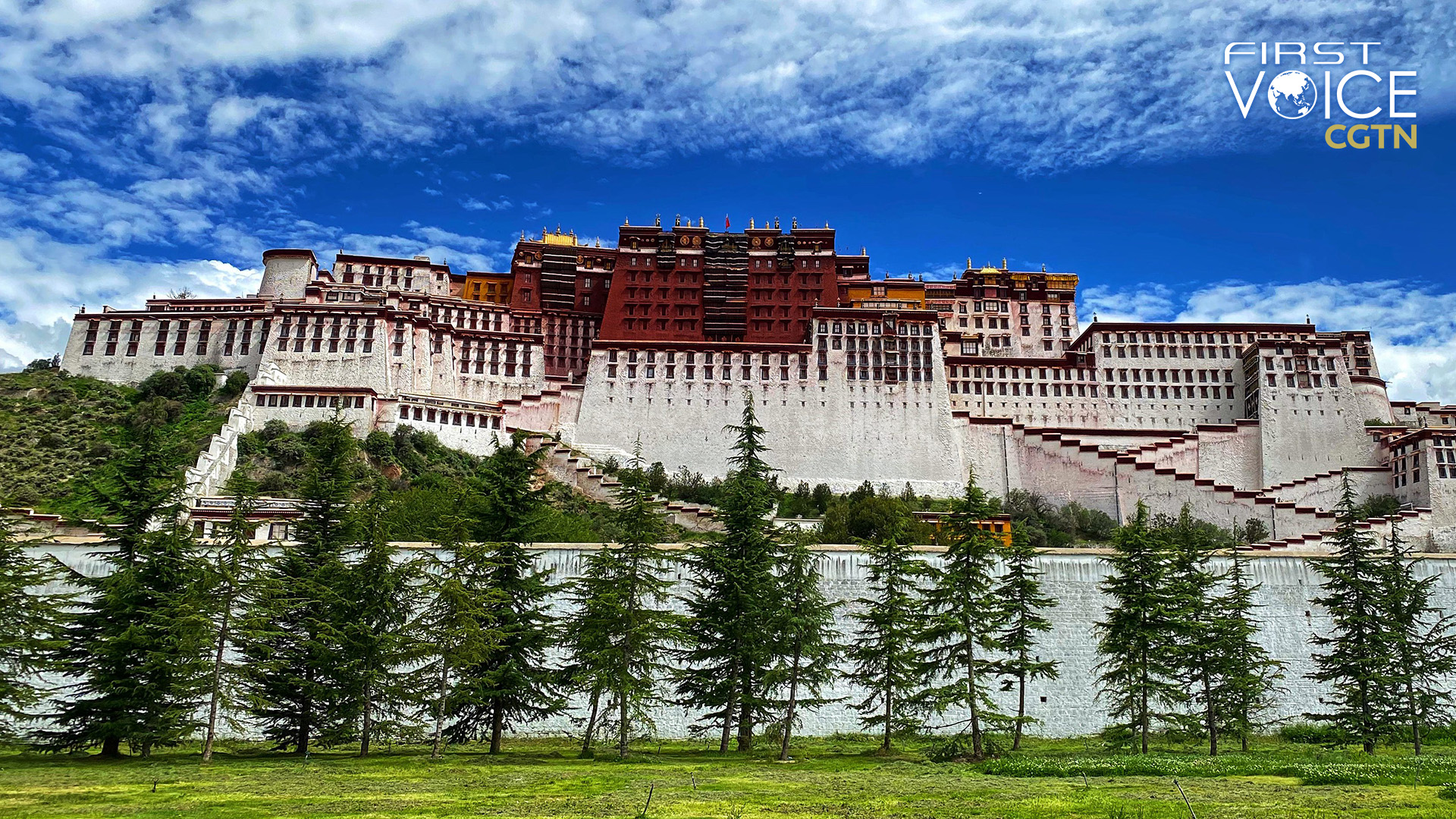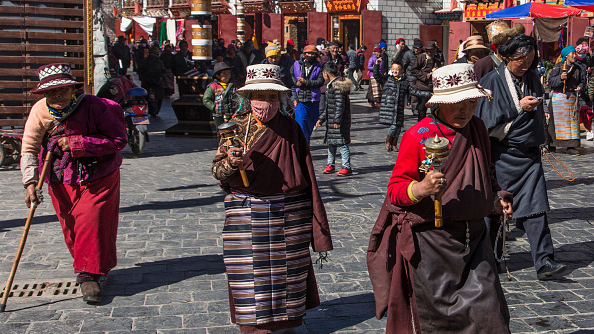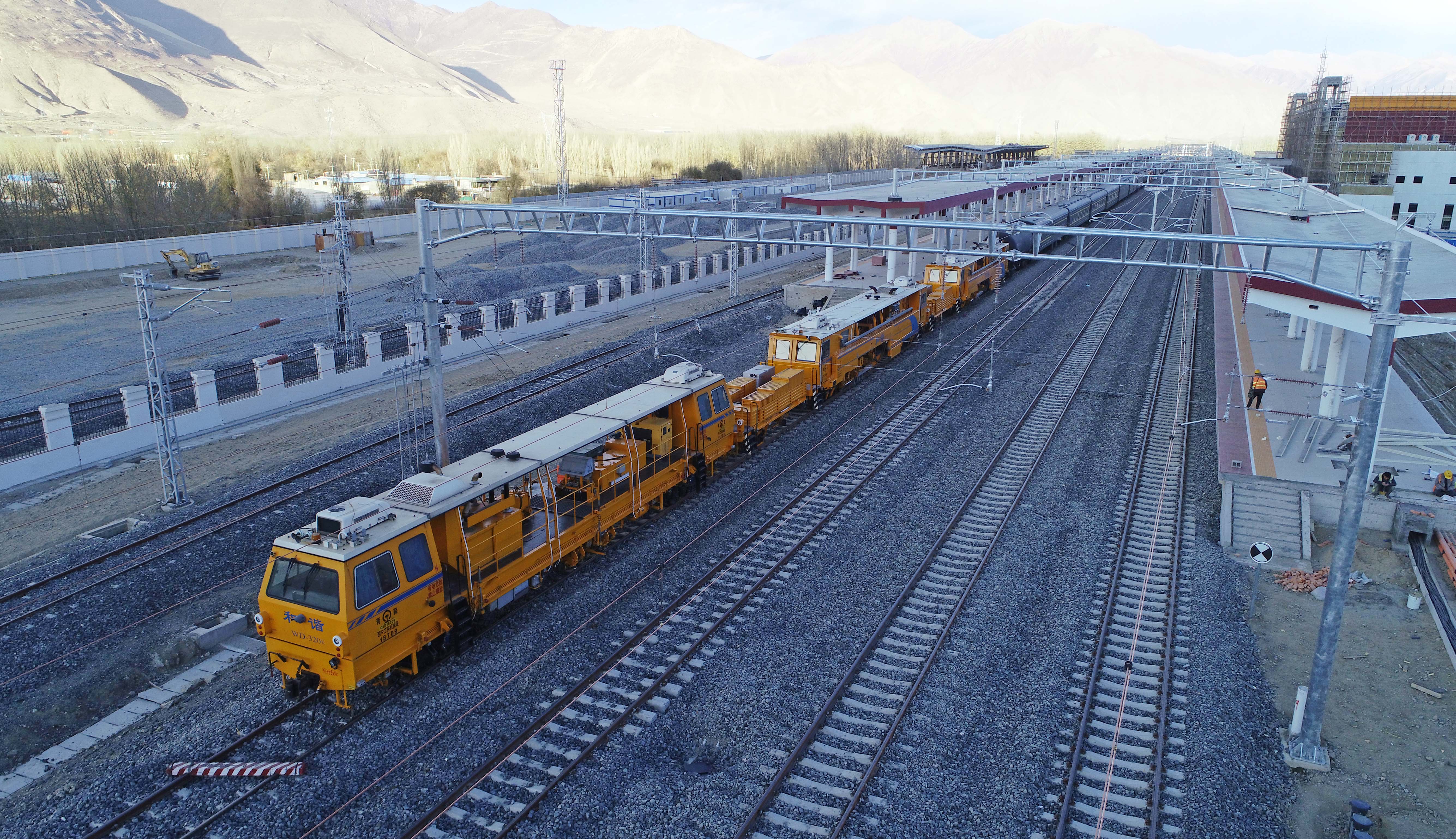
Editor's note: CGTN's First Voice provides instant commentary on breaking stories. The daily column clarifies emerging issues and better defines the news agenda, offering a Chinese perspective on the latest global events.
In the minds of many Westerners, Tibet is one of the last wild places on Earth, with a vibrant pure form of religion that links humanity back to its ancient roots and a pristine landscape unchanged from prehistoric times.
In short, it is Shangri-La and a counterpoint to the complex, often stressful lives of the modern era. From this perspective, it is easy to see why many good-hearted Westerners have been alarmed by the growth of cities, construction of roads and the appearance of a dwindling ancient way of life in the 70 years since it was peacefully liberated by China.
But, by mourning for that "Tibet," these Westerners are also mourning for the simpler times they image they themselves have lost. However, the reality of life in Tibet and the changes that have taken place since the demise of Tibet's theocratic feudal serfdom is quite different.
On May 21, China's State Council Information Office issued a white paper on the peaceful liberation of Tibet and its development over the past seven decades, which offers some context for people who mourn the loss of a Shangri-La that never existed. In old Tibet, there was a rigid hierarchy, with people divided into three classes by blood and position. The upper class, just 5 percent of the population, owned almost all of the land, pastures, forests, mountains, rivers and flood plains, and most of the livestock.

Older Tibetan women in traditional dress circumambulate the Jokhang Temple with their pray wheels in Lhasa, Tibet, China. /Getty
Older Tibetan women in traditional dress circumambulate the Jokhang Temple with their pray wheels in Lhasa, Tibet, China. /Getty
Before the democratic reforms in 1959, there were a mere 197 hereditary aristocratic families, and the few top families each possessed dozens of manors and thousands of hectares of land. The family of the current Dalai Lama owned 27 manors, 30 pastures, 4.8 tons of gold, 2.8 million tons of silver, and more than 6,000 serfs. Serfs and slaves, who accounted for 95 percent of the population, had no freedom or way to make a living. They were exploited through corvée labor, taxes, and high-interest loans and struggled to eke out survival. They had no access to schools other than lamaseries or hospitals — because there were none. They could not own property.
Tibetans welcomed the 1951 peaceful liberation of Tibet. However, the former ruling class chafed as society was restructured. In old Tibet, there was no separation of religious and political power, and the religious elite enjoyed absolute supremacy. But as Tibet modernized, the religious class lost their immense wealth and privilege. As Kenneth Conboy and James Morrison describe in their book "The CIA's Secret War in Tibet," the U.S. Central Intelligence Agency encouraged and eventually controlled Tibet's revolt against China, rallying the former ruling class to try to cling to their power with a failed armed rebellion in 1959.
Similar to the rest of China, the changes in Tibet over the past 70 years are hard to imagine. The serf system has been abolished. Absolute poverty has been completely eradicated. Tibetans own their own homes now. Former nomadic tribesmen have been resettled in prosperous areas and now have access to jobs, education, and healthcare. And Tibetans are free to practice their religion, be it Buddhism, Islam, or Christianity.
In the 1930s, it took at least half a year to travel to the closest major cities outside of Tibet. Since 1951, Tibet has gradually built a transportation network with more than 118,800 kilometers of highways, including 700 kilometers of modern expressways. Railways connect Lhasa with Shanghai and Beijing, and a railway to Sichuan Province are under construction. Tibet has five airports, with 40 domestic and international air routes in operation, reaching 66 cities.

Station house and station front square of the South Railway Station at an altitude of more than 3,500 meters on the section between Lhasa and Nyingchi of the Sichuan-Tibet Railway under construction on November 30, 2020. /Getty
Station house and station front square of the South Railway Station at an altitude of more than 3,500 meters on the section between Lhasa and Nyingchi of the Sichuan-Tibet Railway under construction on November 30, 2020. /Getty
The standard of living continues to soar. In 2020, the per capita disposable income doubled in comparison with 2010. Students enjoy 15 years of publicly-funded compulsory education. Tibet publishes 66 newspapers and periodicals and has built 5,464 rural libraries and 1,787 monastery libraries. All townships have health centers, and all villages have health clinics.
The Tibetan spoken and written language is widely used and is protected by law. It can be used in court and at meetings and activities organized by local governments. Tibet now has 16 periodicals and 12 newspapers in the Tibetan language and has published more than 40 million copies of 7,185 Tibetan-language books.
Tibet has been part of China since the Yuan Dynasty (1271-1368). Colonialist westerners have been trying to pry it away since the 18th century, albeit with repeated failure. A wave of Western support for Tibetan independence occurred in the 1990s and 2000s, with actors, musicians, and other public figures claiming that China was committing cultural genocide in Tibet.
It's true that Tibet has undergone epochal changes within the lifetimes of many people alive today. Tibetans have been transformed from illiterate serfs and to free, educated people, enjoying the modern amenities. The only cultural "genocide" that has taken place is the loss of privilege and power of some bitter members of the former elites.
When thinking about Tibet, we need to set aside our romantic notions of the "noble savage" and ask Tibetans themselves how their lives have changed since liberation. China welcomes the world to visit this beautiful land and find out for themselves.
(If you want to contribute and have specific expertise, please contact us at opinions@cgtn.com.)

